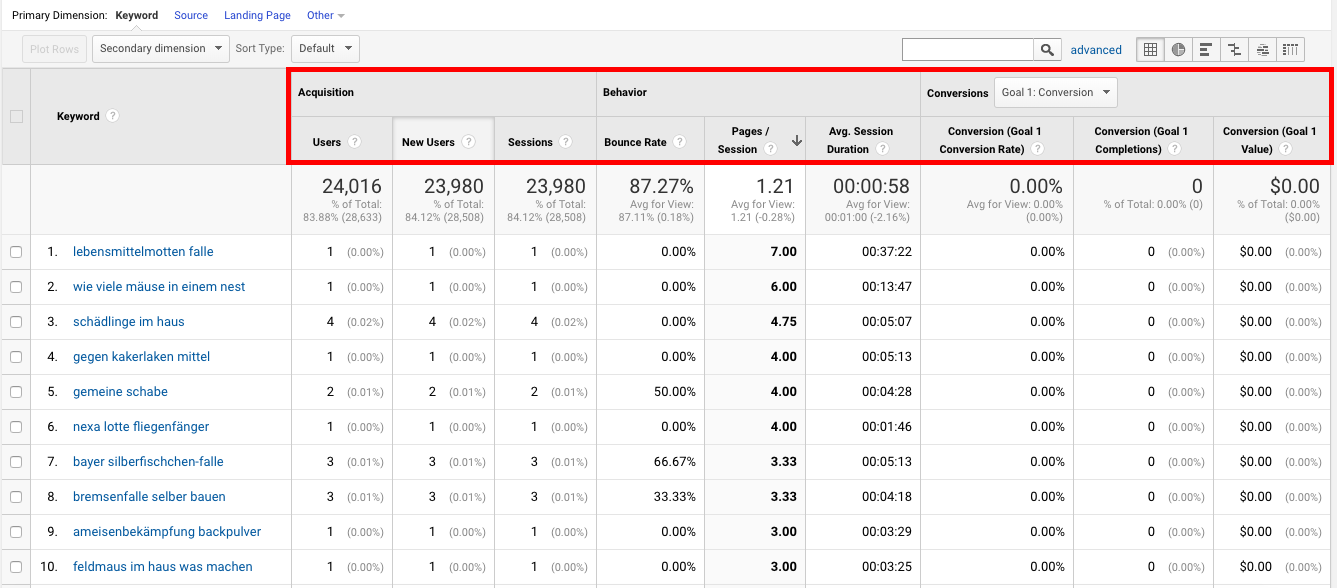Navigating the Depths of Secondary Dimension in Google Analytics: A Thorough Expedition on Its Capability
In the realm of electronic analytics, the complexities of information analysis typically hold the trick to opening valuable insights. Within the expansive toolkit of Google Analytics lies an attribute that works as a concealed treasure for those that look for a much deeper understanding of user actions and site efficiency. Secondary dimensions, though seemingly uncomplicated initially glance, nurture a wide range of untapped possible waiting to be utilized. As we start this trip to explore the nuanced performance of second dimensions, we will reveal how this attribute can brighten patterns, introduce connections, and eventually lead the method for educated decision-making in the digital landscape.
Comprehending Additional Measurements in Google Analytics

Understanding just how additional measurements job is vital for leveraging the full power of Google Analytics. These measurements help you respond to much more intricate inquiries about individual behavior and the performance of your site content and marketing initiatives. As an example, you can utilize second measurements to analyze which devices or browsers are most frequently made use of by site visitors that make a purchase, or to compare the bounce prices of different web traffic resources. By combining main metrics with second dimensions, you can acquire valuable insights that drive informed decision-making and optimization methods - what is a “secondary dimension” in google analytics?.
Leveraging Secondary Dimensions for Information Analysis
Structure upon the foundational understanding of how secondary measurements enhance information evaluation in Google Analytics, the use of these additional layers of info becomes paramount in removing important understandings for educated decision-making and optimization techniques. By leveraging second measurements, analysts can delve deeper into the efficiency metrics by adding more context to the primary dimensions, thus discovering covert patterns and correlations that might not appear initially look. This deeper level of evaluation allows companies to much better comprehend user habits, recognize fads, and pinpoint areas for improvement.
In addition, additional measurements give an even more detailed view of the information, enabling segmentation based on various parameters such as demographics, devices, web traffic sources, and much more. This division assists in a much more granular evaluation, enabling businesses to customize their campaigns and methods to specific audience sections for improved targeting and customization. Essentially, the critical use of secondary dimensions equips companies to make data-driven decisions that drive growth and success in the electronic landscape.
Advanced Methods for Secondary Measurement Application
Exploring intricate approaches to harness the complete capacity of second dimensions in Google Analytics raises the deepness and class of data analysis for tactical decision-making. One sophisticated strategy for applying secondary measurements is the usage of custom-made measurements. Additionally, incorporating second measurements with advanced segments can offer even much more granular insights by using several layers of segmentation to the data.
Interpreting Insights Via Secondary Dimensions

When interpreting understandings with secondary dimensions, it is crucial to take into consideration the context of the information and just how different measurements communicate with each other. As an example, understanding which specific traffic resources result in higher conversion prices or determining which tools users prefer for making acquisitions can offer workable insights for maximizing advertising and marketing campaigns and boosting general web site performance. By thoroughly checking out the data with secondary measurements in mind, businesses can make informed decisions that drive purposeful outcomes and enhance their electronic existence.
Enhancing Performance With Second Measurements

One crucial method to optimize performance with additional dimensions is by segmenting information much more granularly. This enables you to isolate certain variables that might be affecting your metrics and acquire a better understanding of what drives success or failing in your digital efforts. As an example, by incorporating secondary measurements such as 'tool group' and 'touchdown page,' you can identify which device kinds are most efficient for particular touchdown web pages, enabling you to customize your strategies accordingly.
Additionally, utilizing secondary dimensions can aid you determine fads, patterns, and connections that may not try this appear when analyzing data with key dimensions alone. This deeper degree of analysis can lead to more enlightened decision-making and eventually enhance the total efficiency of your internet site or digital advertising campaigns.
Conclusion
Finally, additional measurements in Google Analytics play a critical role in improving information analysis and supplying much deeper understandings into site efficiency. By making use of advanced methods and interpreting the information successfully, companies can enhance their strategies and enhance overall performance. Comprehending the capability of second measurements is important for making notified choices and driving success in the digital landscape.
By leveraging second measurements, experts can dive much deeper right into the performance metrics by adding even more context to the key dimensions, hence discovering hidden patterns and connections that might not be evident at very first glance. One innovative method for implementing additional blog here measurements is the usage of personalized measurements.Having grasped advanced methods like custom dimensions and regex for second measurement execution in Google Analytics, the following critical step is analyzing the important understandings derived via these advanced data segmentation techniques. Translating understandings via second measurements entails examining the connections between the secondary and primary measurements chosen, uncovering patterns, trends, and connections that may not be promptly noticeable when looking at the information in its whole.When translating understandings via secondary dimensions, it is crucial to consider the context of the information and exactly how various measurements communicate with each other.